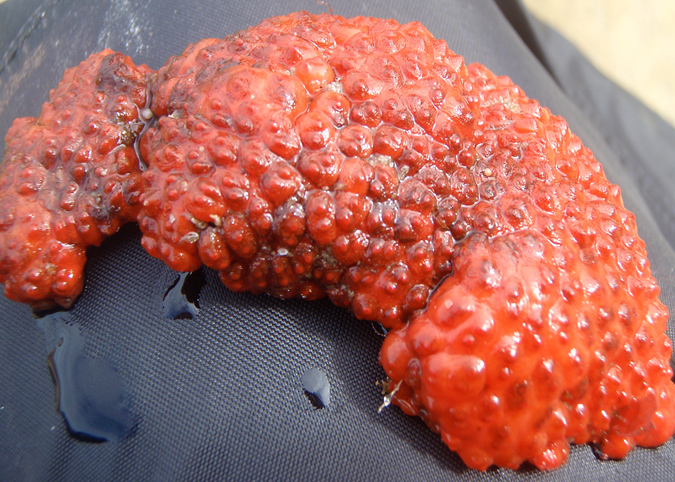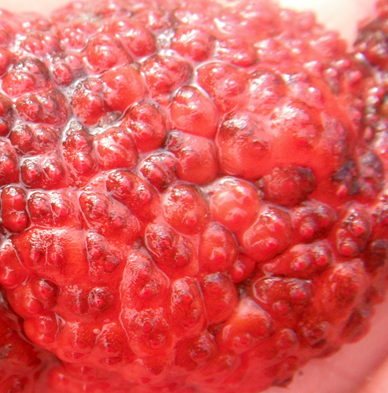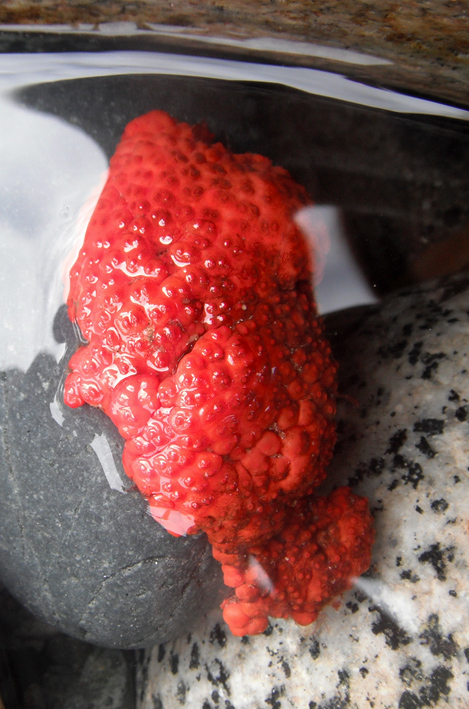Fused orange social ascidians • Metandrocarpa dura
Identification
This social colonial tunicate species has tightly packed individuals fused by a shared tunic. It is opaque and a bright shade of orange. Individuals get to 6 mm high and in diameter, while colonies get to 30 cm or more wide.
Habitiat & Range
This species attaches to rocks in the intertidal and subtidal, and is usually found in areas with strong currents or surf. Its range extends from BC to southern California. It is more common in the southern portion of its range.
Similar Species
Orange social ascidians (Metandrocarpa taylori) are less tightly packed, with individuals more differentiated and attached by stolons or a thin section of tunic. Aggregations tend to be smaller.
This social colonial tunicate species has tightly packed individuals fused by a shared tunic. It is opaque and a bright shade of orange. Individuals get to 6 mm high and in diameter, while colonies get to 30 cm or more wide.
Habitiat & Range
This species attaches to rocks in the intertidal and subtidal, and is usually found in areas with strong currents or surf. Its range extends from BC to southern California. It is more common in the southern portion of its range.
Similar Species
Orange social ascidians (Metandrocarpa taylori) are less tightly packed, with individuals more differentiated and attached by stolons or a thin section of tunic. Aggregations tend to be smaller.
References
Harbo, R. M. (2011). Whelks to whales: Coastal marine life of the Pacific Northwest [revised]. Madeira Park, BC: Harbour Publishing. P. 201.
Lamb, A., and Hanby, B. (2005). Marine Life of the Pacific Northwest [electronic version]. Madeira Park, BC: Harbour Publishing.
Authors and editors of page
Kelly Fretwell and Brian Starzomski (2015).
Harbo, R. M. (2011). Whelks to whales: Coastal marine life of the Pacific Northwest [revised]. Madeira Park, BC: Harbour Publishing. P. 201.
Lamb, A., and Hanby, B. (2005). Marine Life of the Pacific Northwest [electronic version]. Madeira Park, BC: Harbour Publishing.
Authors and editors of page
Kelly Fretwell and Brian Starzomski (2015).






